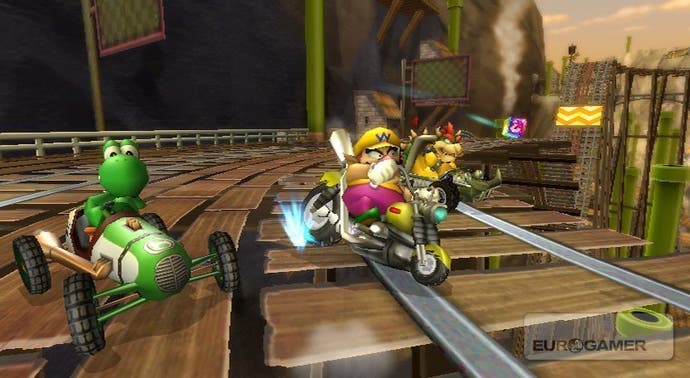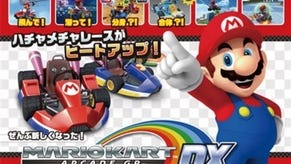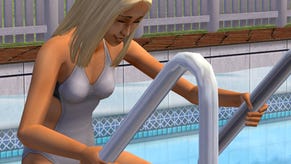Mario Kart Wii
Booster gold.
There is no stunt system to speak of. Just a jerk of the remote prompts your character into random move when timed with a jump, or a wheelie when riding a motorbike. Seeing Peach or Yoshi pulling rad somersaults off a half-pipe is a faintly uncomfortable kind of silly - like watching Master Chief dance a tango, or Tony Hawk jumping on mushrooms. But Mario Kart can weather a bit of silliness, and the stunts themselves are irrelevant; like everything else in this game, stunts are actually about speed, since they grant a boost when you land. In that sense, they work superbly, more so on the new tracks which have been designed with them in mind.
The bikes are a little bit more of a departure. In theory they make no major changes to the controls or mechanics of Mario Kart, apart from losing one level of powerslide boost - the yellow sparks - to balance out the addition of wheelies, which neuter steering but can add some speed on the straights. Even the heaviest bikes are markedly twitchier than the karts, however, and although their manoeuvrability can be a blessing when it comes to threading through littered banana-skins and tightly-packed racers, they take some getting used to. The lightest bikes have powerslides that turn so incredibly sharply that they emerge from the other side of 'effective' into a world of 'almost useless'. Ultimately, they're rewarding and exciting to ride, but the learning curve is not inconsequential.
Bearing that in mind, it's odd that Nintendo has structured Mario Kart Wii the way that it has. The entry-level 50cc Grands Prix are for karts only, and the 100cc medium-difficulty races are exclusive to bikes, while 150cc allows both types of vehicle. As with Mario Kart DS, there eight championships, with sixteen new tracks and sixteen reprisals from former versions of Mario Kart, all the way back to the SNES original. Only once you've fully completed all eight will you unlock the chance to race 50cc and 150cc with both bikes and karts.

Combined with the bikes' unfamiliarity, this makes for a steep difficulty hike after 50cc, which many will find off-putting. That said, 50cc isn't such a pushover that it's not rewarding to work through in itself. The Special Cup tracks - including renditions of Rainbow Road and Bowser's Castle that must rank alongside the all-time best, and the frantic traffic-weaving of Moomview Highway - are superbly dramatic and challenging. Meanwhile, even the first of the retro cups features the fiendish Ghost Valley 2 from Super Mario Kart, hardly the most straightforward of rides.
By and large, the new track design is very close in style to Mario Kart DS: a good number of technically interesting corners slipped into hyperactive barrage of spectacle, hazard, incident, dynamically changing racing lines and opportunities for accident and mischief. There are too many memorable sections to list, though special mention must be made of the treacherous conveyors of Toad's factory and the ridiculous, icy slaloms of DK's Snowboard Cross.
The similarities with Mario Kart DS don't stop there. Mario Kart Wii has the same superlative music - comically squeaky play-room funk, warp-speed folk fiddling and heartbreakingly nostalgic chip-music originals. It has the same plethora of unlockables: you can win access to more characters and six more vehicles. Characters and vehicles are grouped in three rough groups of three, with light, medium and heavy for each. This means you can choose to either exaggerate or balance out the characteristics of your favourite member of Mario's crew: a nice touch. Vehicles are now rated for off-road ability, drift and speed boosts alongside speed, weight, acceleration and handling.














